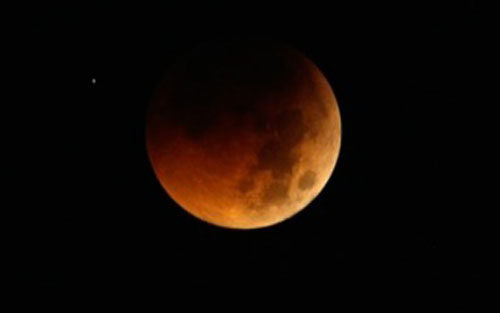 Bigger, brighter, bolder – the moon will be all this and more tonight, because it will be the Solstice Supermoon night, the brightest for 2013.
Bigger, brighter, bolder – the moon will be all this and more tonight, because it will be the Solstice Supermoon night, the brightest for 2013.
This weekend, if you do look up at the full moon, you will notice that it’s a bit more striking than usual. Tonight, on June 23, the full moon will be the closest and largest full moon of the year 2013. It also presents the moon’s closest encounter with Earth for all of 2013. The moon will not be so close again until August 10, 2014.
As a result, it will appear 8 per cent larger and 17 per cent brighter than usual – an event widely known as a supermoon. In fact, tonight’s moon will be 14 per cent larger in size compared with the smallest full moon of the year (that’ll be on August 20 in 2013).
According to TimeAndDate.com, the full moon rise in Dubai will begin at 15:33 hours today, June 23, 2013, although it’s unlikely that we’ll be able to actually spot the moon with naked eyes until 19:09, the estimated time for moon rise in the emirates of Dubai, Sharjah, Ajman and Umm Al Quwain.
The estimated moon rise time in capital Abu Dhabi is 19:12, while in Ras Al Khaimah it is 19.08 and in Fujairah, it is 19:05, the earliest among the UAE emirates. This year’s supermoon is a little more special than usual in that it almost coincides with the summer solstice (June 21, the longest day of the year).
Armchair astronomers can also catch the sky show virtually via a live high-definition webcast of the supermoon through a number of online telescopes across the world. It’ll be best to search for one near you location to get a virtual view if you’re too busy to step outside, or if you find the outdoors too humid.
While it will definitely make for quite a spectacle, there also have been scientifically unconfirmed reports and rumours about the supermoon causing natural disasters, and there have been some text messages claiming that the recent Indian floods have been a precursor of the June 23 supermoon. Scientists have rejected these claims.
Myth of the Supermoon
The term ‘supermoon’ was coined by astrologer Richard Nolle in 1979, arbitrarily defined as: …a new or full moon which occurs with the Moon at or near (within 90% of) its closest approach to Earth in a given orbit (perigee). In short, Earth, Moon and Sun are all in a line, with Moon in its nearest approach to Earth. (Source: Wikipedia).
Incidentally, the astronomical community doesn’t refer to it as a ‘supermoon’ but as perigee-syzygy or perigee moon. If you are an astronomer, you’d know that perigee is the point at which the moon is closest in its orbit to the earth, and syzygy is a full or new moon, when the earth, the moon and the sun are aligned.
According to SkyAndTelescope.com, this weekend’s supermoon will also bring the largest tides of 2013, because a closer moon exerts a stronger gravitational pull, creating more variation between the tides. However, this variation is hardly enough to account for massive earthquakes, flooding, or volcanic eruptions. (E247)

